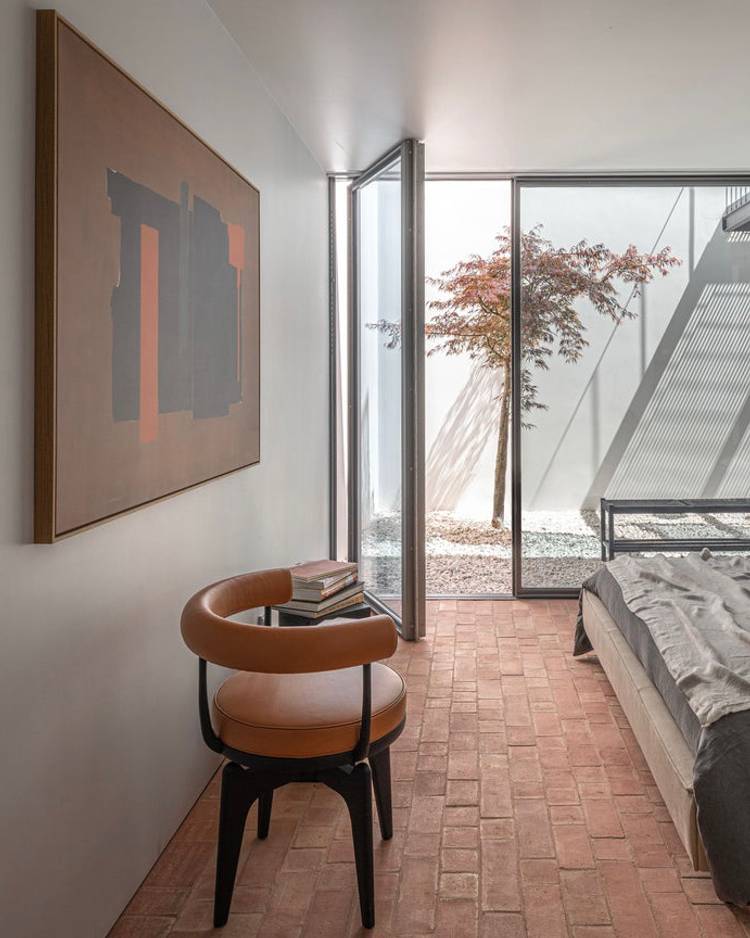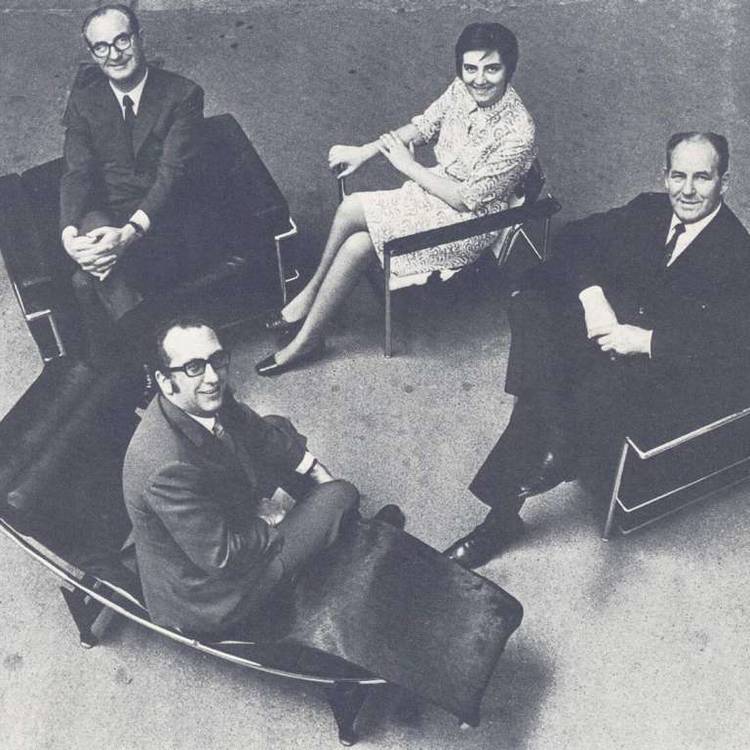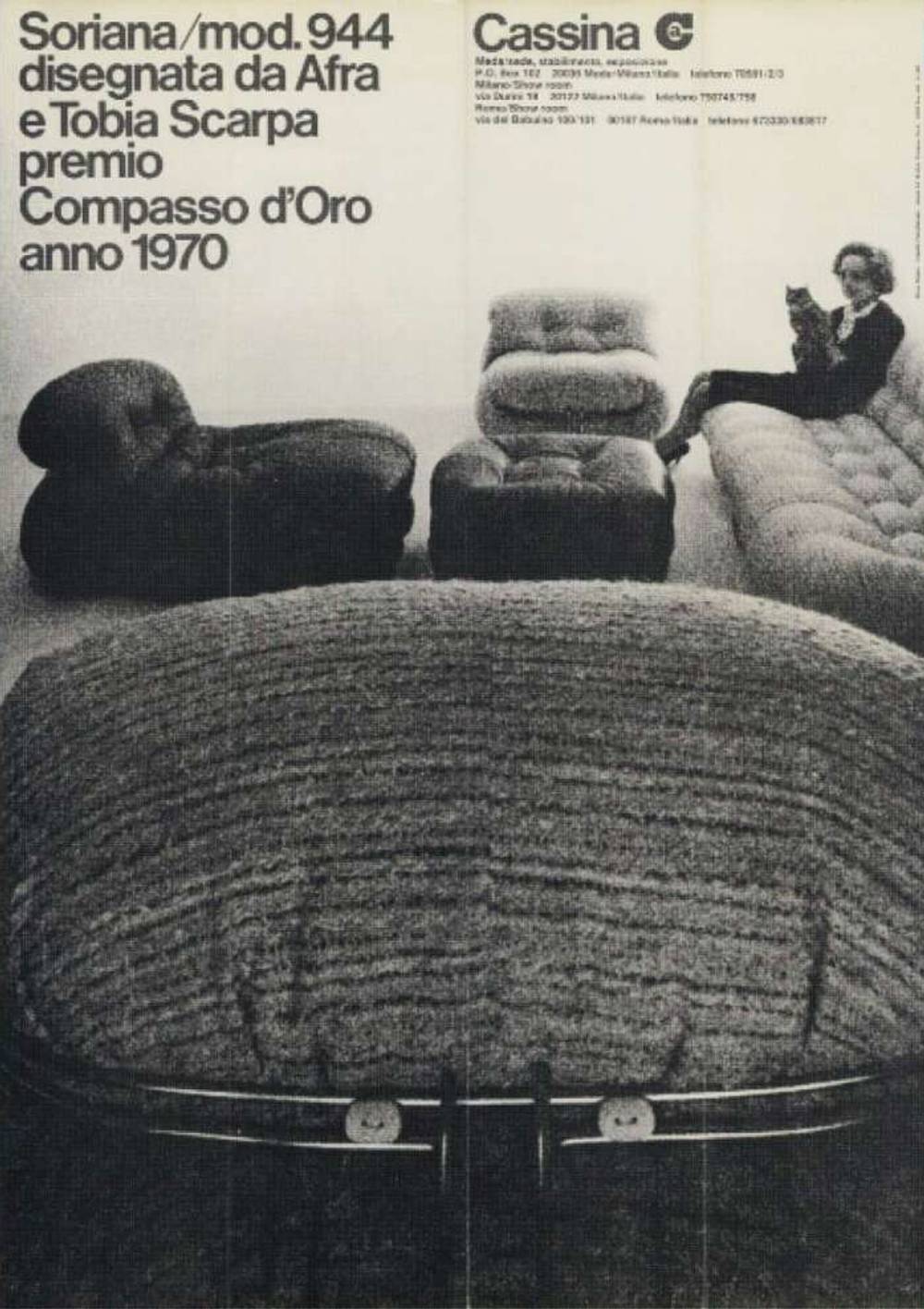Cassina • INDOCHINE
Chair
Base structure in natural walnut. Swivel seat with poplar plywood structure. Seat and back in flexible cold moulded polyurethane foam, covered in leather. Designed by Charlotte Perriand, in 1943. Cassina Edition.
The entire Cassina collection can be ordered in our physical stores.
REF. 84137
W.61 x H.71 x D.56cm
Seat H. 48cm
Ready to deliver in 2 a 3 months
This swivel armchair is a re-working of the 7 Fauteuil tournant, whose frame was in tubular metal, and was the work of Charlotte Perriand in 1927. It was later exhibited along with other furniture that Perriand co-designed with Le Corbusier and Pierre Jeanneret for the 1929 Salon d’Automne in Paris. The original design was executed in Vietnam in 1943, using the materials and crafts techniques available during that war-time period.
The first model had three legs, with a fourth added later. This piece reflects the designer’s flexible and resourceful approach: she often adapted her designs according to the availability of materials and where production was to take place. Cassina has re-issued Indochine in the full respect of the original design, interpreting it, and incorporating a solid wood base that highlights the excellence of the company craftsmen’s wood-working skills.

Charlotte Perriand was an integral part of an avant-garde movement that reshaped aesthetic values and championed modernity in the early 20th century. Her focus centered on revolutionizing interior composition, aiming to redefine contemporary living, a legacy still resonant in today's lifestyle trends.
At a youthful twenty-four, Perriand embarked on a decade-long collaboration with Le Corbusier and Pierre Jeanneret at their renowned Parisian studio. Her influence in their work added a human touch to Le Corbusier's rationalism. Perriand's creative prowess thrived in her ability to infuse daily life with new aesthetic values, notably her mastery in discovering and utilizing novel materials. Her decade-long partnership with Le Corbusier and Pierre Jeanneret, along with her immersive experience in Japan during the 1940s and '46, marked periods of profound creative energy.
Post-professional career, Perriand focused on creating original, harmonious pieces commissioned by prestigious entities like Air France and esteemed international organizations. Her enduring dedication to humane and innovative rationalism remained a hallmark of her personality, evident in her projects, and was reaffirmed with their revival in the “Cassina I Maestri” collection.


Established in 1927 by Cesare and Umberto Cassina in Meda, near Milan, Cassina launched industrial design in Italy in the 1950s, based on a totally innovative approach that marked the transition from artisan production to mass production. Throughout its history, Cassina has been a melting pot of design luminaries. In the 1950s, it forged an iconic partnership with architects like Le Corbusier, Pierre Jeanneret, and Charlotte Perriand, creating legendary pieces such as the LC1 Sling Chair and LC2 Grand Confort sofa. These collaborations revolutionized furniture design, emphasizing form and function in equal measure.

One of Cassina's remarkable aspects is its ability to transcend eras. The brand's reissues of iconic designs retain their original essence while adapting to modern sensibilities, appealing to new generations of design enthusiasts. This blend of heritage and contemporary relevance is exemplified in pieces like the LC4 Chaise Longue, a timeless icon of comfort and style. Cassina's collaborations extend beyond mid-century architects. It has partnered with contemporary designers like Philippe Starck, Patricia Urquiola, and Jaime Hayon, infusing fresh perspectives into its collections. These collaborations merge diverse design philosophies, resulting in eclectic yet harmonious pieces that resonate with a broad audience.
In the present design landscape, Cassina stands as a bastion of innovation and heritage, continuously pushing boundaries while honoring its rich legacy. Its commitment to craftsmanship, combined with a forward-thinking approach, ensures its relevance and enduring influence in the ever-evolving world of design.

